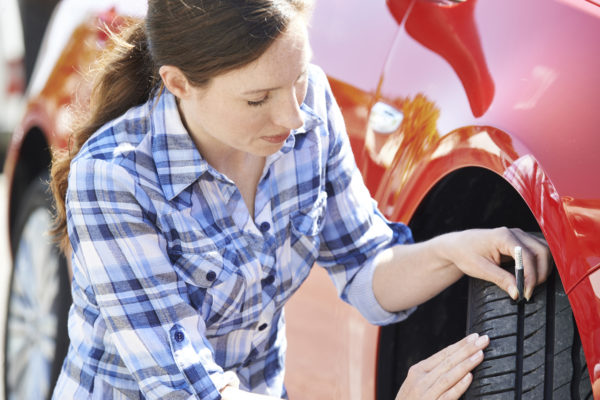
Since Granger has vehicles on the road all day, every day, our associates, including drivers and mechanics, must be vigilant about ensuring these vehicles are in correct working order. After all, if our trucks aren’t in good condition, it could affect the safety of our associates and everyone else on the road. But even those who just use their cars for running errands and taking the kids to school have good reason to make sure they’re road ready every time they leave the house.
Before leaving for work, many of us have our morning routines that we need to complete before we leave the driveway. These are just everyday tasks that many of us complete every day and, maybe, take for granted. We just assume that our car will be in the same working condition as it was the previous day when we got home and parked it in the driveway, but that is not always the case. What if there was something we could to increase the odds of that happening? Well, for one thing, we could learn to be more like our garbage men.
As professional drivers, our associates are held to a set of standards written out by the Federal Motor Carrier Safety Administration (FMCSA). Part 392 of these regulations states that drivers must inspect their commercial vehicle prior to operating it on the public roadway. We call this a pre-trip inspection and it must be conducted every day before our drivers leave the parking lot.
Even if you don’t drive professionally, it’s in your best interests to pay attention to the vehicle you’re driving and look for anything that might be concerning before you leave your house. Our pre-trip inspection starts as our drivers approach their trucks. Even from a distance our process begins, and yours could too. Our drivers are mainly looking for anything out of the ordinary. Anything that looks different about your vehicle could indicate something wrong. This could be a puddle that points to a fluid leak, a flat tire or maybe a suspension issue. These items may be seen even before a driver gets close to the vehicle.
Once the driver enters the cab and you enter your vehicle, the next step in the process begins. Drivers will safely start the truck, ensuring the brakes are engaged and the truck is in the proper gear. At this time, drivers also check other safety indicators, such as dashboard warning lights or messages. The mirrors, windshield, wipers, horn and seat belt all must be checked to ensure they are in working order. The heater and defroster must be checked to ensure windows can be easily defrosted for good visibility. The cab of our trucks must contain the proper emergency equipment that includes emergency triangles (in case of a breakdown), a fire extinguisher and spare fuses. You may also want to ensure you have safety equipment in your vehicle in case of a breakdown, although they may not be the same items. In addition to a fire extinguisher, you may want to carry items like a first aid kit, a flashlight, emergency flares, a tool kit for easy repairs, a spare tire (and tools to change it), jumper cables and warm clothing (in case of a winter breakdown).
The next step in our inspection is to exit the cab and begin checking the exterior of the truck. Many drivers start on the driver’s side and work their way around the truck, inspecting each item in more detail. Drivers will be looking at all the lights to make sure they are working properly and not damaged. Having broken lights could make it difficult for other drivers to see us. The air pressure in each tire will be checked. Having a low tire could cause a blow out and severe injury. Each wheel and rim will be checked. The brakes and suspension will be checked to make sure no components are damaged or missing. The truck’s frame will be inspected for any cracks or damages. The exhaust system will be checked to make sure it is not damaged or leaking. A visual inspection of the exterior of your vehicle could help ensure you don’t have any of the same hazards our drivers are looking for.
After walking around the vehicle, drivers will get back in the cab. If everything looks good and the truck is safe to operate for the day, our drivers will complete a sheet in the Daily Vehicle Inspection Report book. At Granger we use this to record tire air pressure, truck mileage and hours, driver name and location and any fluids that may have been added, such as oil or fuel. This form is also used to record any deficiencies with the truck. If any deficiencies are found, the driver is not allowed to leave the property and must visit the maintenance facility prior to leaving to resolve any issues. While you might not want to be this meticulous with your records, recording adding air and fluids could help you spot a problem in the future.
Although we may be a little biased, we think there are a lot of lessons to be learned from garbage men about driving, safety and vehicle maintenance. Performing a pre-trip inspection before you leave your house is one example that may keep you and your family safer out on the road and help you avoid some hassles.
